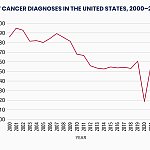
The debate over the safety of fluoride in drinking water was reignited earlier this month when Health and Human Services Secretary Robert F. Kennedy Jr. proposed a ban on fluoridated water in communities across the United States.
In tandem with the health secretary’s announcement, the Environmental Protection Agency (EPA) announced at a press conference in Salt Lake City on April 7 that it would review “new scientific information” about the purported health risks of fluoridated water.
The EPA is responsible for setting the maximum levels of fluoride allowed in public drinking water, which is currently 0.7 milligrams per liter (mg/L), according to the Centers for Disease Control and Prevention (CDC).
Kennedy’s move coincides with a recent ban in Utah, the first state to prohibit fluoride in drinking water.
Kennedy told The Associated Press that he plans to assemble a task force to investigate the issue and draft new recommendations on fluoridated water.
While Kennedy cannot outright ban fluoridation across U.S. communities, he could order the CDC to change its recommendation. He can also work with the EPA to change the maximum threshold of fluoride in drinking water.
Fluoride, a naturally occurring mineral, was first added to water in U.S. communities in the
While the long-term effects of fluoride exposure are not well understood, the American Academy of Pediatrics, the American Dental Association, the
These health agencies attest that the current designated levels of fluoride in drinking water are safe and that fluoride toothpaste and supplements are safe for use in age-appropriate amounts.
“When government officials, like Secretary Kennedy, stand behind the commentary of misinformation and distrust peer-reviewed research, it is injurious to public health,” Brett Kessler, DDS, president of the American Dental Association, said in a statement.
“Let’s stop the rhetoric and comprehensively study fluoride at the optimal level once and for all,” he said.
Research on the effects of fluoride exposure is limited and ongoing. The problem with the current literature is a lack of substantial evidence supporting the potential health harms to populations within the United States, most notably the possible neurotoxic effects in children.
Adding to the confusion, fluoride levels are much higher in many countries outside the United States, where research on fluoride exposure is more common. What’s more, most European countries and some provinces in Canada do not add fluoride to drinking water at all.
Despite advancements in dental care and the unknowns about potential health effects, many people may wonder why fluoride is still in our drinking water.
“What’s happened over the past, say, two decades is that there has been growing evidence that fluoride exposure in children, and in particular, in the developing child, is neurotoxic,” said Bruce Lanphear, MD, MPH, professor of health sciences at Simon Fraser University in British Columbia, Canada.
“That is, it’s associated with diminished IQ scores, which is very much along the lines of what we’ve seen with lead in children. Should we expect universal agreement? Absolutely not. We don’t see a universal agreement with lead. We see more agreement with lead, but we have a much more stable measure of lead,” Lanphear told Healthline.
In 2015, the amount of fluoride added to water to prevent tooth decay was
Rates of dental fluorosis, a common condition that causes tooth discoloration and brown and white spots on permanent teeth, have
“It seems to have plateaued,” Lanphear said of the condition, “but it has increased quite a bit, and the only reason is [children are] getting too much fluoride.”
Health Secretary Kennedy’s position on fluoride may be partially influenced by a recent global study published in January in
Fluoride proponents note these findings are based on exposure in children in non-U.S. countries, mainly in China and India, where fluoride levels are much higher. The American Dental Association urged the public to interpret the findings with caution.
“I think there’s been a lot of fear that’s been instilled by RFK Jr. and his associates,” said Danelle Fisher, MD, FAAP, board certified pediatrician at Providence Saint John’s Health Center in Santa Monica, CA.
“We need to start by ensuring people that currently they are safe and that we have effective ways to keep their kids healthy and safe. In the case of dental health, it’s correctly fluoridated water — and we do see good dental health with the kids who are exposed to our water and fluoridated toothpaste,” she told Healthline.
The JAMA Pediatrics study followed the release of a massive report from the
However, the report notes flaws in its study, citing insufficient data to determine whether the current low fluoride level of 0.7 mg/L in U.S. community water systems negatively affected children’s IQ.
“We have growing evidence that fluoride is neurotoxic because kids are getting too much fluoride, as evidenced by increasing rates of fluorosis, and because there’s now new evidence that fluoride is not effective when added to water at preventing tooth decay,” Lanphear said.
Lanphear, who co-wrote an
“Many of the early studies were cross-sectional and not particularly high quality. And that’s been one of the major criticisms of this new evidence — but it really shouldn’t be a criticism, because that’s how most science evolves,” Lanphear said.
Indeed, many studies examining fluoride toxicity have been small in scale and were conducted in animals and in vitro.
Still, researchers have sounded alarm over the potential threats of fluoride exposure to human health. Many have cited dental fluorosis as a complication, while others have observed more serious effects.
A 2022 review of the literature suggests exposure to fluoride at levels much higher than the current 0.7 mg/L level in the United States or the
Still, as with other fluoride studies, these findings are limited and may be easily misinterpreted. For instance, the fluoride levels studied in the 2022 review exceeded the U.S. and global thresholds for fluoride in water. And of course, animal studies do not necessarily translate to humans.
Due to the limited nature of fluoride research, health experts and scientists remain divided on whether fluoride should remain in public drinking water or be removed entirely.
Inderpal S. Randhawa, MD, board certified internist, immunologist, pediatrician, pediatric pulmonologist, and medical director of the Children’s Pulmonary Institute at MemorialCare Miller Children’s & Women’s Hospital Long Beach in Long Beach, CA, noted the risk of tooth decay and poor dental hygiene still exists in some parts of the United States.
He told Healthline that Kennedy’s proposed ban on fluoridated water seemed reasonable in communities with widespread access to dental care and fluoride-based toothpaste. In areas with poor dental health, however, fluoride levels should remain as low as possible, he said.
“The concerns are real,” Randhawa said. “Long-term, systemic fluoride exposures can result in an excess amount of fluoride in the body. This can impact the bones, thyroid, and other organ systems. Reducing this risk in today’s advanced dental care is something to consider.”
Fisher said the current fluoride levels are safe but called for more studies with U.S. children to better understand the potential risks.
“It’s always important to look at whatever research is coming out and base our recommendations on what we think is in the best interest of the children who need this fluoride for good dental health — but obviously, we never want to do harm,” Fisher said.
“So, if there is compelling evidence that comes out that the fluoride supply in the water in the U.S., for instance, is too high and is leading to a decrease in IQ, which could potentially lead to cognitive decline, that is important information to know. The problem with making conclusions from the [JAMA Pediatrics] study is that it might be misguided.”
Fisher noted that the JAMA Pediatrics findings are based on countries with almost double the amount of fluoride in their water supplies.
“There’s nothing in there that studied children in the U.S., but since this is being cited as evidence, it is important not to create hysteria amongst families. If we’re going to do research that’s going to directly correlate IQ scores and fluoride exposure in the U.S., let’s do that study,” she said.
“Over time, we recognized there is an importance to having fluoride in our water supply. Adding fluoride to the water in an adequate amount was important to improve dental health. That is something that has absolutely been shown and demonstrated, especially here in the U.S.,” Fisher noted.
Many health experts agree that intermittent fluoride use appears safe and effective.
“As opposed to drinking fluoride in water where the exposure is systemic, local application with toothpaste-like products is much lower exposure,” Randhawa said. “Similarly, receiving such treatments at the dentist is minimal exposure.”
Fisher said that before fluoride was introduced to drinking water, dental and other health problems were significant in areas with scarce access to fluoride and proper dental care.
“When we didn’t have fluoride in the water, we saw so much more teeth problems and subsequent problems that came from that,” she said.
“The amount of dental decay and disease was rampant, and it is rampant in parts of the world where kids don’t have access to fluoride. Dental problems don’t just affect the teeth, they affect the entire child. We are talking about kids who would go on to potentially develop brain problems, brain abscesses that spread from dental decay,” Fisher explained.
Lanphear shared a different perspective, noting the risks of water fluoridation may outweigh the potential benefits.
“The evidence about the effectiveness of water fluoridation or systemic fluoride has never been rigorous,” he said, citing a large systematic review published in 2024 in Cochrane Review.
Researchers examined evidence dating back to 1975 on whether water fluoridation is effective in reducing tooth decay. They found that fluoridated water had little to no benefit in preventing cavities, maybe a 3% to 4% reduction, Lanphear noted, which meant it was not statistically significant. This, he said, questions the benefit side of the equation.
Lanphear also cautioned against fluoride-based toothpaste for young children, which contradicts current pediatric recommendations. “Children 1 to 4 years old might be getting 80% of their fluoride from swallowing toothpaste,” he surmised.
Be that as it may, fluoridated water remains at very low levels in U.S. communities for now, and pediatric dentists continue to recommend fluoride-based toothpaste.
Pediatricians like Fisher recommend that children under 6 years old use a pea-sized amount of fluoridated toothpaste twice daily. Fisher said pediatricians and dentists consider this a safe amount to ingest if swallowed since most young children do not know how to spit.
“Are we swallowing too much toothpaste? There’s no evidence to show that we are. However, if studies are done in the future that do demonstrate that, we will adjust our recommendation, but currently, there’s no need to panic,” she said.
Fisher reiterated that the fluoride levels in U.S. water systems are adequate but urged further study of the potential effects.
“Let’s look at how we as a society, as Americans, can best supply a good amount of fluoride to our kids so their teeth and brains are healthy,” she said.
“It would be great to see a prospective study of American children, meaning you look at them first and then follow them over time and watch their developments, and you can measure IQ, if you want,” she said.
Fisher noted there are other ways to assess cognitive development that don’t involve IQ scores.
“I think those studies will be interesting and important, and potentially, if we find out that the amount of fluoride in our water is too much or not enough, we can adjust it accordingly,” she said.
Lanphear agreed that more research on fluoride, in general, is needed, but opposed fluoridated water.
“I think, at a minimum, what we can say is it’s time to convene an independent scientific panel to review the evidence on the safety and purported benefits of water fluoridation,” he said.
“Fluoride toothpaste is efficacious, based upon good, rigorous, randomized, controlled trials. Drinking it or taking it as a supplement does not appear to be efficacious. So given all of that, if you ask me, and I had to make that decision as an individual, I’d say, absolutely take it out of the water,” Lanphear said.
Fisher, on the other hand, remained optimistic about the low levels of fluoride in water and offered reassurance about current best practices for dental health.
And if there is one thing most, if not all, experts agree on, it’s that more research on the effects of fluoride exposure is needed.
“Scientists are here to make sure that we have good health, for ourselves, for our children. Nothing is more important,” Fisher said. “We do need fluoride. We need a good amount, and we should not panic about this.”





